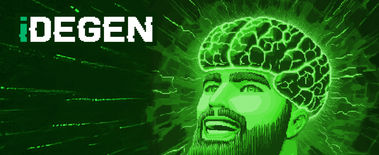The COVID-19 pandemic has caused a severe disruption in the general flow of life. From healthcare to entertainment, no area was left unaffected. The list also includes the sports industry. The onset of the quarantine meant the temporary suspension of all live sports. Major events were either postponed or canceled.
However, live events were gradually resurrected by adopting specific protocols. Also, the audience was kept involved mainly through technological means, as live streams or data feeds.
COVID-19 Protocols
The implementation of preventative and safety measures has played a big role in the resurrection of live sports. Such measures allow players and personnel to participate in competitions while being protected from exposure to COVID-19. These protocols are flexible and continue to be upgraded as our understanding of the virus evolves. While each league has its own set of measures, here is a list of the general points:
- Testing and treatment measures are in place to identify, isolate and treat members who have been diagnosed with the virus.
- The maximum number of players who can travel at the same time is reduced.
- Maks are mandatory during travel on team bus and planes.
- Masks are required during the game. For example, in the National Football League (NFL), players at the sidelines without their helmets have to wear masks.
- Contact tracing technologies were implemented to ensure that distancing measures are kept.
- Post-game interaction is limited. This applies to both personnel and players from opposing teams.
Cardboard Cutouts
Playing in an empty stadium is an eerie experience for everybody, for the players, and also spectators watching from home. The atmosphere from the stands is a huge part of the experience. However, the Centers for Disease Control and Prevention (CDC) considered that limiting attendance to sporting events was crucial to protect fans.
Some stadiums took to filling the stands with substitute spectators. Cardboard cutouts are particularly popular in the NFL. For the recent Super Bowl, 30,000 cutouts were sold at $100 each. These spectators filled the stadium while respecting social distancing.
Spectator Reactions
No live spectators at the stadium mean no chants. There is a deep silence in which one can easily hear talks between players or coaches. We all miss the atmosphere of a live event.
Several strategies were implemented to try and mend the situation. Fake/artificial crowd noise has been one of the most popular approaches, not only in the US but throughout the world. Yet the sound of an invisible crowd has fans divided.
Major League Baseball tried out something new. They played pre-recorded reaction videos sent in by fans, during crucial moments throughout the game. This at least made the crowd visible, even if it was only a small portion of it.
Technology
Technology came into play perhaps more than ever as it offered to help engage the audience from a safe distance, the comfort of their home. More live streaming options became available, so fans had a higher degree of access to the event.
Live data feeds grew increasingly popular, allowing fans to receive detailed information and stats about a specific game. The live sports Odds Feed also gained ground. Users are kept in the loop about the ever-changing dynamic during a sporting event through an ongoing stream of updates. Knowing the information is provided by experts adds validation to the data.
Providers have focused more on the client and their needs and tried to make the interaction as intuitive as possible. There are management tools designed to increase the control of the user over the specific sports segment they are interested in. For example, you could decide to have your feed focused on live games or pre-match events. What is more, an in-depth monthly report can help you gain more insight over the past month and build a better perspective over events.
Sports Must Go On
Although sports were severely affected by the ongoing pandemic, in some cases, solutions were found to keep things going. The biggest concern was the safety of the personnel and that of the fans. However, a carefully crafted protocol was set in motion to this effect. What is more, technology has become the backbone of the industry, keeping live events alive and promoting spectator engagement.
As we are slowly marching towards post-pandemic times, it is also worth asking what new measures are here to stay and how did COVID-19 change the future of sports?













